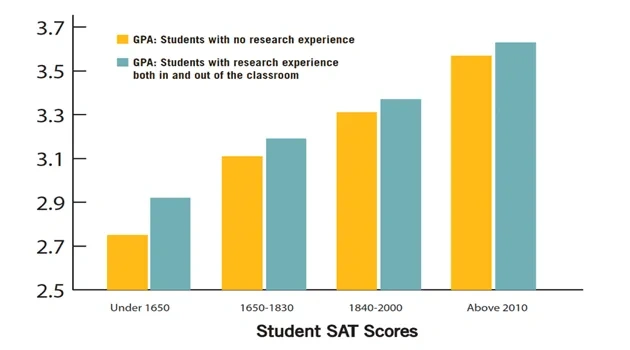Small But Mighty: UT Researchers Discover Seahorse's Secret Weapon
It may be 2 inches long, lemon yellow, and the slowest-moving fish in the sea, but it's also one of the deadliest predators the ocean has ever seen.

Meet the dwarf seahorse. According to a new study by researchers at the UT Marine Science Institute, this whimsical little creature has evolved an ingenious attack strategy to catch its prey: a head shape that creates a "no wake zone" in the water, allowing the seahorse to successfully ambush its prey of choice, a type of plankton called the copepod. That strategy is what makes the seahorse one of the animal kingdom's most successful hunters, says research associate Brad Gemmell, who led the study.
"People think that seahorses are docile grazers," Gemmell says, "but it turns out that they are some of the stealthiest hunters of some of the most evasive prey on the planet."
Gemmell was working on another project when he noticed that the dwarf seahorse, a species common in seagrass beds along the Texas coast, is an extremely good hunter. "Its success rate is over 90 percent," Gemmell says. "Most fish have a hunting success rate of 30 to 40 percent, so it's very high."
What's more, the copepod is incredibly tough to catch —it swims at more than 500 body lengths per second, far faster than a cheetah's 20-30 body lengths per second—making the seahorse's hunting ability even more impressive. Gemmell and his team wanted to find out what was behind the little creature's hunting prowess.
To do just that, they teamed up with Texas Tech mechanical engineer Jian Sheng on a snazzy new method: high-speed digital 3-D holography. First, the researchers put a seahorse and some copepods in a tank. Then they seeded the water with highly reflective particles that would help reveal precisely how the water was moving. Next, they used a microscope, a laser, and a specialized video camera to film a recording showing exactly how the animals and the water moved. "What the laser light does," Gemmell explains, "is when you shine that beam into a camera and put an object in front of it, that object is going to either reflect, refract, bend, or change the properties of that wave."
The holography technique showed the researchers that the seahorse's head has a "no wake zone"—a shape evolved to disturb the water as little as possible, allowing the seahorse to sneak up on the copepod undetected almost every time. To make sure that it really was about the head shape, and not a behavioral strategy like inhaling a tiny gulp of water, the researchers even repeated the experiment with a dead seahorse. When they saw the "no wake zone" again, they knew their suspicions were correct.
Why study this tiny, little-known underwater drama in the first place? According to Gemmell, understanding the links at the bottom of the food chain will inform our knowledge of marine ecology in general—and we live in an era when conservation is key.
"Fish stocks all over the world are declining, and fishing is a hot-button political issue right now," Gemmell says. "There's a growing sense of urgency to be able to manage stocks and to have ecological models that are more predictive. Understanding small-scale predator-prey interactions like this one will help flesh out the bigger picture."
Below, watch a clip from one of Gemmell's seahorse videos:
The dwarf seahorse. Photo by Javier Corbo on Flickr.





